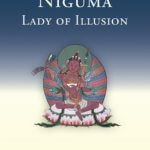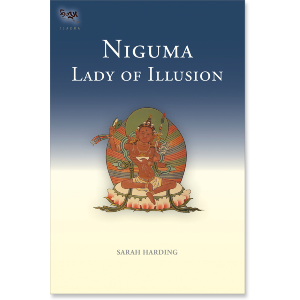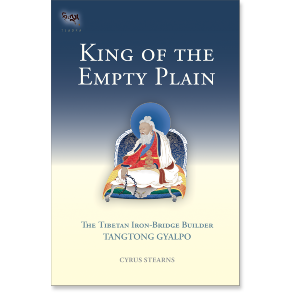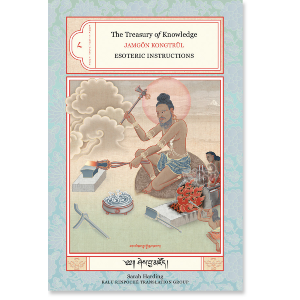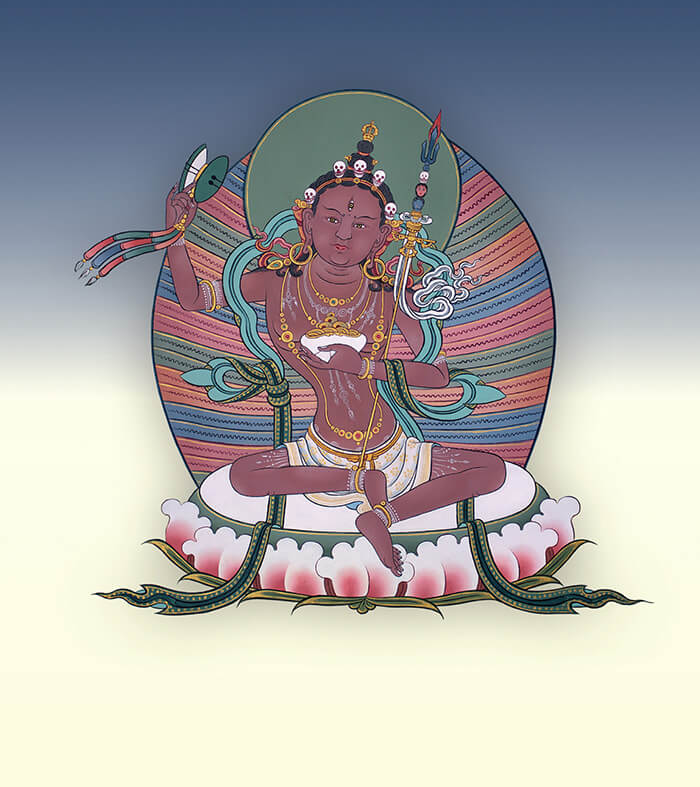
Sarah Harding writes in the Introduction to Niguma, Lady of Illusion:
“As much as I have searched for this dakini named Niguma and hoped to find her as an actual person and the subject of her own story, it may have been in vain. Her own story, if it ever existed, is not to be found apart from the few details that I have explored here. Before providing the translation of her biography, therefore, let us see what a few of those masters have said of their encounters with Niguma.”
Here is one of the stories…
Khyungpo Naljor’s Niguma
After studying with many gurus in Nepal and India, the Tibetan yogi Khyungpo Naljor resolved to find someone who had met the Buddha face-to-face. He was directed to Niguma, who was reported to have received teachings from the great Vajradhara. Inquiring as to where she was at present, he was told that if one had pure perception, one could see her face anywhere, but those with impure perception might search up and down without ever finding her. That was because she dwelt on the pure grounds and had transformed to a rainbow body.
“Pure grounds” are certainly a matter of perception, rather than location.
Nevertheless, they said, she occasionally shows up in the forest of a great charnel ground, Sosadvipa, to preside over the feast circles of dakinis. Inspired, Khyungpo travels there immediately, while paying homage to the Buddha. He sees a dark dakini hovering in the sky, bedecked in bones and holding a trident and skull-cup, dancing about and displaying various forms, appearing sometimes as one and sometimes many. Convinced it is she, Khyungpo requests teachings, but the dakini is uncooperative.
“I am a flesh-eating dakini,” she says. “When my retinue arrives, you’ll be devoured. Get out now.”
Flesh-eating dakinis may have been the original dakinis of Indian lore, those scary females that populated the charnel grounds and other places where god-fearing people dared not tread. They constellate some of our greatest fears and are never far behind the more beneficent figures that entice and instruct the Tibetan adepts. Here, the gimmick of terrorizing the aspirant as a test of determination is of course a common element in hero stories. At the same time, it is not entirely a ruse. The chimerical dakini, or the energy she represents, could turn dangerous at any time and devour rather than nurture the practitioner. Khyungpo, undeterred, again requests instruction in secret mantra.
“To request secret mantra mahayana requires gold. If there’s gold, I’ll do it,” the dakini retorts.
Khyungpo offers her the nearly impossible amount of five hundred gold srang, but she just throws it about the forest. At this point Khyungpo starts to wonder if she really is a flesh-eating dakini since she does not want the gold. It is difficult not to speculate about the implication here: that a genuine dakini would be greedy for gold, but apparently a flesh-eating dakini is satisfied with—well, flesh.
The dakini then glares into space to invoke her vast dakini entourage, who begin constructing, in space, all the requisites for an empowerment, such as palace, sand mandala, and feast provisions. She then bestows the empowerments for the practices of illusory body and dream, tells Khyungpo to get up, and then transports him miraculously about twenty-five miles. There, in the sky above a golden mountain like the great mount Avrha, the dakinis perform the feast ceremony and dance about. The golden mountain has four rivers of gold pouring from the four sides, and Khyungpo asks if it can really be somewhere in India or if it is the dakini’s magical projection. To this she replies with perhaps the most famous verse associated with Niguma, reiterated in various ways in the Path of Illusion:
This variety of desirous and hateful thoughts
that strands us in the ocean of cyclic existence
once realized to be without intrinsic nature,
makes everything a golden land, child.
If you meditate on the illusion-like nature
of illusion-like phenomena,
actual illusion-like buddhahood
will occur through the power of devotion.
Niguma then commands Khyungpo to recognize his dreams by means of her blessing, which he does indeed do. He continues to have the very dreamy experience of traveling to the land of gods and demigods, being swallowed whole by a gigantic demigod, and receiving the entire instruction on the six dharmas from Niguma. She even mentions, in his dream, that no one but he has ever received the complete teaching in one nap in all of India. What is never clarified is the starting point of the dream experience: whether it was from the time of being transported to the Golden Mountain or from his first encounter with the dakini. He recognizes the dream only after she blesses him to so do. In any case, he now wakes up and “really” (dngos su) receives the guidance on the six dharmas again three times, along with a number of other instructions.

